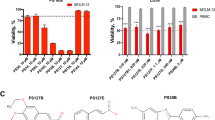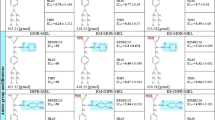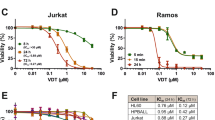Abstract
The effects of the diatomic radical, nitric oxide (NO), on melphalan-induced cytotoxicity in Chinese hamster V79 and human MCF-7 breast cancer cells were studied using clonogenic assays. NO delivered by the NO-releasing agent (C2H5)2N[N(O)NO]- Na+ (DEA/NO; 1 mM) resulted in enhancement of melphalan-mediated toxicity in Chinese hamster V79 lung fibroblasts and human breast cancer (MCF-7) cells by 3.6- and 4.3-fold, respectively, at the IC50 level. Nitrite/nitrate and diethylamine, the ultimate end products of DEA/NO decomposition, had little effect on melphalan cytotoxicity, which suggests that NO was responsible for the sensitization. Whereas maximal sensitization of melphalan cytotoxicity by DEA/NO was observed for simultaneous exposure of DEA/NO and melphalan, cells pretreated with DEA/NO were sensitized to melphalan for several hours after NO exposure. Reversing the order of treatment also resulted in a time-dependent enhancement in melphalan cytotoxicity. To explore possible mechanisms of NO enhancement of melphalan cytotoxicity, the effects of DEA/NO on three factors that might influence melphalan toxicity were examined, namely NO-mediated cell cycle perturbations, intracellular glutathione (GSH) levels and melphalan uptake. NO pretreatment resulted in a delayed entry into S phase and a G2/M block for both V79 and MCF-7 cells; however, cell cycle redistribution for V79 cells occurred after the cells returned to a level of cell survival, consistent with treatment with melphalan alone. After 15 min exposure of V79 cells to DEA/NO (1 mM), GSH levels were reduced to 40% of control values; however, GSH levels recovered fully after 1 h and were elevated 2 h after DEA/NO incubation. In contrast, DEA/NO (1 mM) incubation did not reduce GSH levels significantly in MCF-7 cells (approximately 10%). Melphalan uptake was increased by 33% after DEA/NO exposure in V79 cells. From these results enhancement of melphalan cytotoxicity mediated by NO appears to be complex and may involve several pathways, including possibly alteration of the repair of melphalan-induced lesions. Our observations may give insights for improving tumour kill with melphalan using either exogenous or possibly endogenous sources of NO.
This is a preview of subscription content, access via your institution
Access options
Subscribe to this journal
Receive 24 print issues and online access
$259.00 per year
only $10.79 per issue
Buy this article
- Purchase on Springer Link
- Instant access to full article PDF
Prices may be subject to local taxes which are calculated during checkout
Similar content being viewed by others
Author information
Authors and Affiliations
Rights and permissions
About this article
Cite this article
Cook, J., Krishna, M., Pacelli, R. et al. Nitric oxide enhancement of melphalan-induced cytotoxicity. Br J Cancer 76, 325–334 (1997). https://doi.org/10.1038/bjc.1997.386
Issue Date:
DOI: https://doi.org/10.1038/bjc.1997.386
This article is cited by
-
Nitric oxide: role in tumour biology and iNOS/NO-based anticancer therapies
Cancer Chemotherapy and Pharmacology (2011)
-
Nitric oxide enhancement of fludarabine cytotoxicity for B-CLL lymphocytes
Leukemia (2001)



